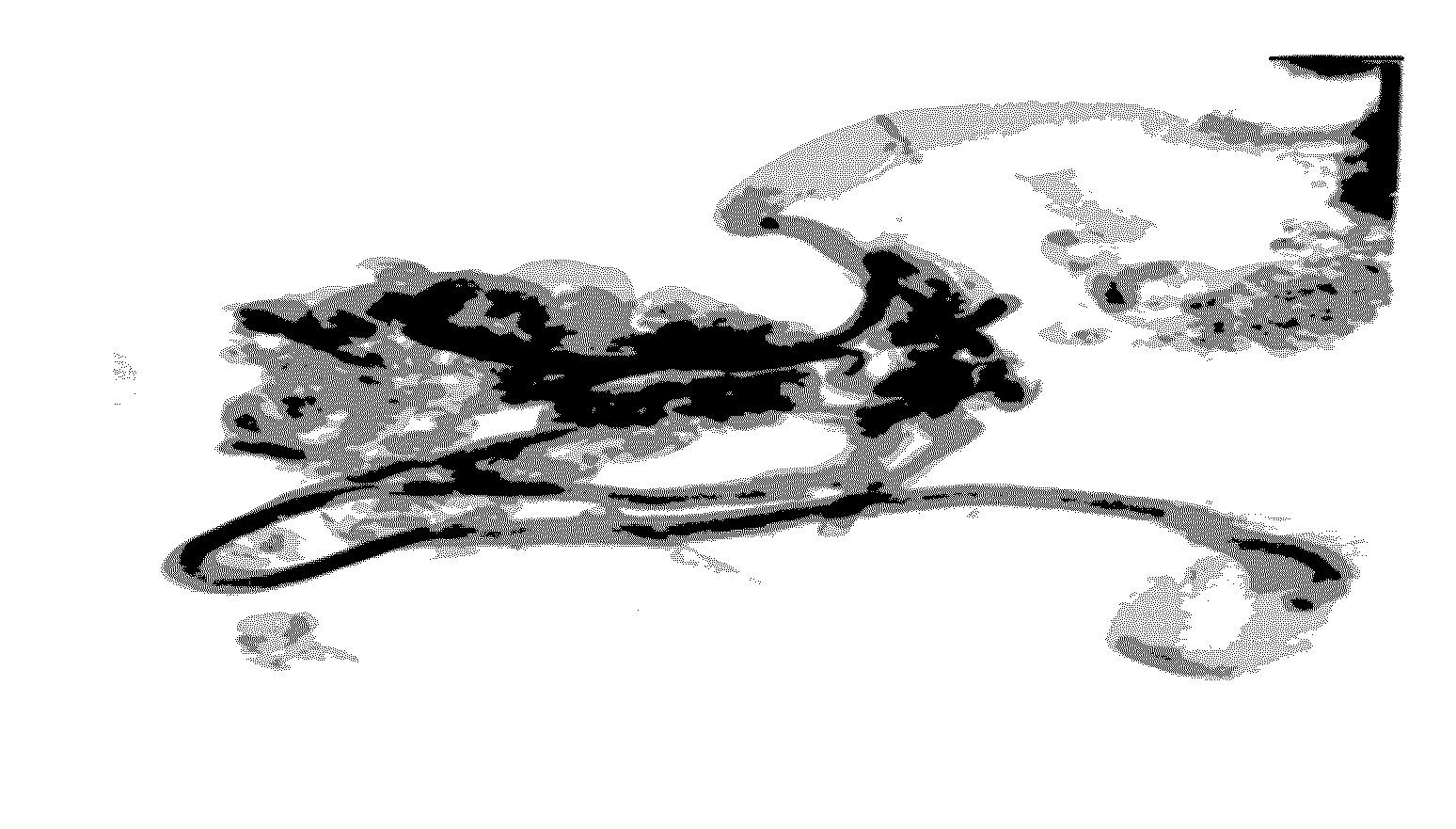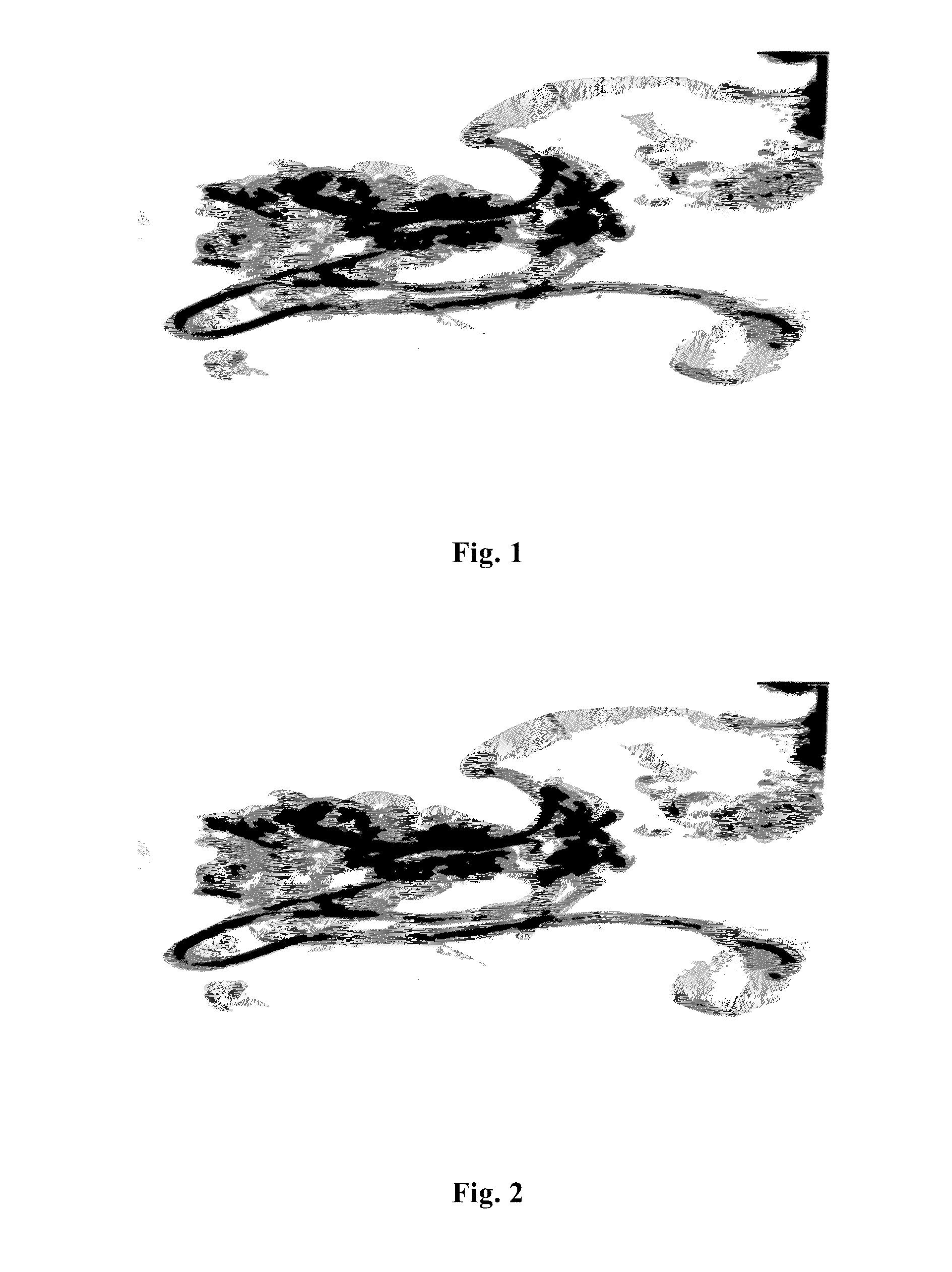Pre-passivation process for a continuous reforming apparatus, and passivation process for a continuous reforming apparatus during the initial reacation
a technology of reforming apparatus and passivation process, which is applied in the direction of physical/chemical process catalysts, hydrocarbon oil treatment products, hydrogen sulfides, etc., can solve the problems of poor catalyst flow, failure to complete the initial reacation, and even the shutdown of the apparatus, so as to reduce the operation risk of the apparatus
- Summary
- Abstract
- Description
- Claims
- Application Information
AI Technical Summary
Benefits of technology
Problems solved by technology
Method used
Image
Examples
example 1
[0042]The reforming catalyst was loaded into the continuous reforming apparatus, wherein the catalyst comprised 0.29 mass % of platinum, 0.31 mass % of tin, and the remaining being γ-alumina.
[0043]Nitrogen gas having a purity of 99.8 mol % was used to purge the apparatus to the extent that the oxygen content in the vent gas was less than 0.5 mol %, and then hydrogen gas having a purity of 96 mol % was used to replace to the extent that the hydrogen content in the discharged gas was greater than 90 mol %. Hydrogen gas was filled to the extent that the reforming high-pressure separator had a pressure of 350 KPa. The circulation of the reforming compressor was initiated so that the recycle gas amount reaches to 5×104Nm3 / h. After each reactor was increased to the reactor inlet temperature of 200° C. at a rate of 20-40° C. per hour, dimethyl disulfide was injected into the recycle gas and temperature thereof continued to be increased. The injection of dimethyl disulfide enabled the sulfu...
example 2
[0048]The continuous reforming apparatus in Comparative Example 2 was normally shut down and checked, and the catalyst was unloaded. The inner of the reactor was cleaned. By sieving and gravitational settling, a small amount of carbon granules were separated from the catalyst and re-fed into the catalyst for production. The reforming feedstocks and catalyst in Comparative Example 2 were used therein. After air-tight seal of hydrogen gas in the system was checked and qualified, the hydrogen circulation was initiated. The temperature of the reaction system was increased at a rate of 40-50° C. per hour. After each reactor reached to a temperature of 370° C., the reforming feedstock was fed in a feeding amount of 57 t / hour. Meanwhile, the reactor was increased to 480° C. at a rate of 20-30° C. / hour. While the temperature was increased, dimethyl disulfide and tetrachloroethylene were injected into the reforming feedstock and the sulfur amount in the reforming feedstock was controlled to ...
example 3
[0049]According to the process as disclosed in Example 2, the continuous reforming apparatus was normally shut down and checked, and the catalyst was unloaded. The reaction started after the catalyst was fed, wherein the difference lay in the sulfur injection amount of 1.0 μg / g into the reforming reaction materials after the feedstocks were fed into the reforming reaction apparatus. After normal operation, the main operation conditions and reaction results of various reactors were listed in Table 4.
PUM
| Property | Measurement | Unit |
|---|---|---|
| Temperature | aaaaa | aaaaa |
| Temperature | aaaaa | aaaaa |
| Temperature | aaaaa | aaaaa |
Abstract
Description
Claims
Application Information
 Login to View More
Login to View More - R&D
- Intellectual Property
- Life Sciences
- Materials
- Tech Scout
- Unparalleled Data Quality
- Higher Quality Content
- 60% Fewer Hallucinations
Browse by: Latest US Patents, China's latest patents, Technical Efficacy Thesaurus, Application Domain, Technology Topic, Popular Technical Reports.
© 2025 PatSnap. All rights reserved.Legal|Privacy policy|Modern Slavery Act Transparency Statement|Sitemap|About US| Contact US: help@patsnap.com



